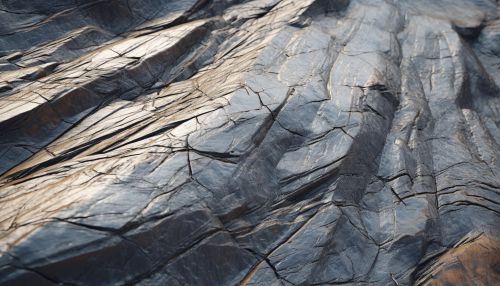Planar Deformation Features
Introduction
Planar Deformation Features (PDFs) are microscopic structures that are formed in the mineral grains of rocks when they are subjected to high pressures. They are typically found in quartz and other minerals that are resistant to deformation. PDFs are one of the diagnostic features of shock metamorphism, a process that occurs during meteorite impacts.
Formation
PDFs are formed when a rock is subjected to a sudden, intense pressure. This pressure can be generated by a variety of events, such as a meteorite impact or a nuclear explosion. The pressure causes the mineral grains in the rock to deform, creating a series of parallel planes within the grain. These planes are the PDFs. The formation of PDFs requires pressures of at least 5 GPa, which is equivalent to the pressure at the Earth's core.
Structure
PDFs are typically a few micrometers wide and can extend for hundreds of micrometers within a mineral grain. They are parallel to each other and are often oriented in the same direction as the shock wave that created them. The planes are typically filled with a glassy material, which is a result of the mineral melting during the shock event.
Diagnostic Feature of Shock Metamorphism
One of the key characteristics of PDFs is that they are only formed under conditions of shock metamorphism. This makes them a useful tool for identifying rocks that have been subjected to a meteorite impact. Other features of shock metamorphism, such as shatter cones and high-pressure minerals, can also be used to identify impact structures, but PDFs are the most definitive evidence.
Distribution
PDFs can be found in a variety of rocks, including igneous rocks, sedimentary rocks, and metamorphic rocks. They are most commonly found in quartz, but can also be found in other minerals such as feldspar and zircon. The distribution of PDFs within a rock can provide information about the direction and intensity of the shock wave.


Importance in Earth and Planetary Sciences
PDFs are an important tool in the field of Earth and Planetary Sciences. They are used to identify and study meteorite impact structures, which can provide information about the history and evolution of the Earth and other planets. In addition, the study of PDFs can provide insights into the properties of materials under extreme conditions, which has applications in fields such as materials science and nuclear physics.
